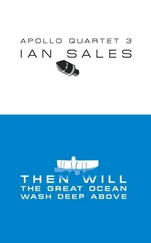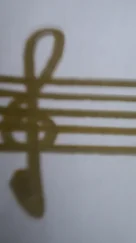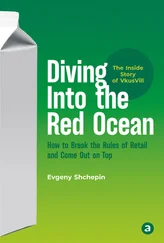Joseph J. Torres - Life in the Open Ocean
Здесь есть возможность читать онлайн «Joseph J. Torres - Life in the Open Ocean» — ознакомительный отрывок электронной книги совершенно бесплатно, а после прочтения отрывка купить полную версию. В некоторых случаях можно слушать аудио, скачать через торрент в формате fb2 и присутствует краткое содержание. Жанр: unrecognised, на английском языке. Описание произведения, (предисловие) а так же отзывы посетителей доступны на портале библиотеки ЛибКат.
- Название:Life in the Open Ocean
- Автор:
- Жанр:
- Год:неизвестен
- ISBN:нет данных
- Рейтинг книги:5 / 5. Голосов: 1
-
Избранное:Добавить в избранное
- Отзывы:
-
Ваша оценка:
- 100
- 1
- 2
- 3
- 4
- 5
Life in the Open Ocean: краткое содержание, описание и аннотация
Предлагаем к чтению аннотацию, описание, краткое содержание или предисловие (зависит от того, что написал сам автор книги «Life in the Open Ocean»). Если вы не нашли необходимую информацию о книге — напишите в комментариях, мы постараемся отыскать её.
Life in the Open Ocean: The Biology of Pelagic Species
Life in the Open Ocean: The Biology of Pelagic Species
Life in the Open Ocean — читать онлайн ознакомительный отрывок
Ниже представлен текст книги, разбитый по страницам. Система сохранения места последней прочитанной страницы, позволяет с удобством читать онлайн бесплатно книгу «Life in the Open Ocean», без необходимости каждый раз заново искать на чём Вы остановились. Поставьте закладку, и сможете в любой момент перейти на страницу, на которой закончили чтение.
Интервал:
Закладка:
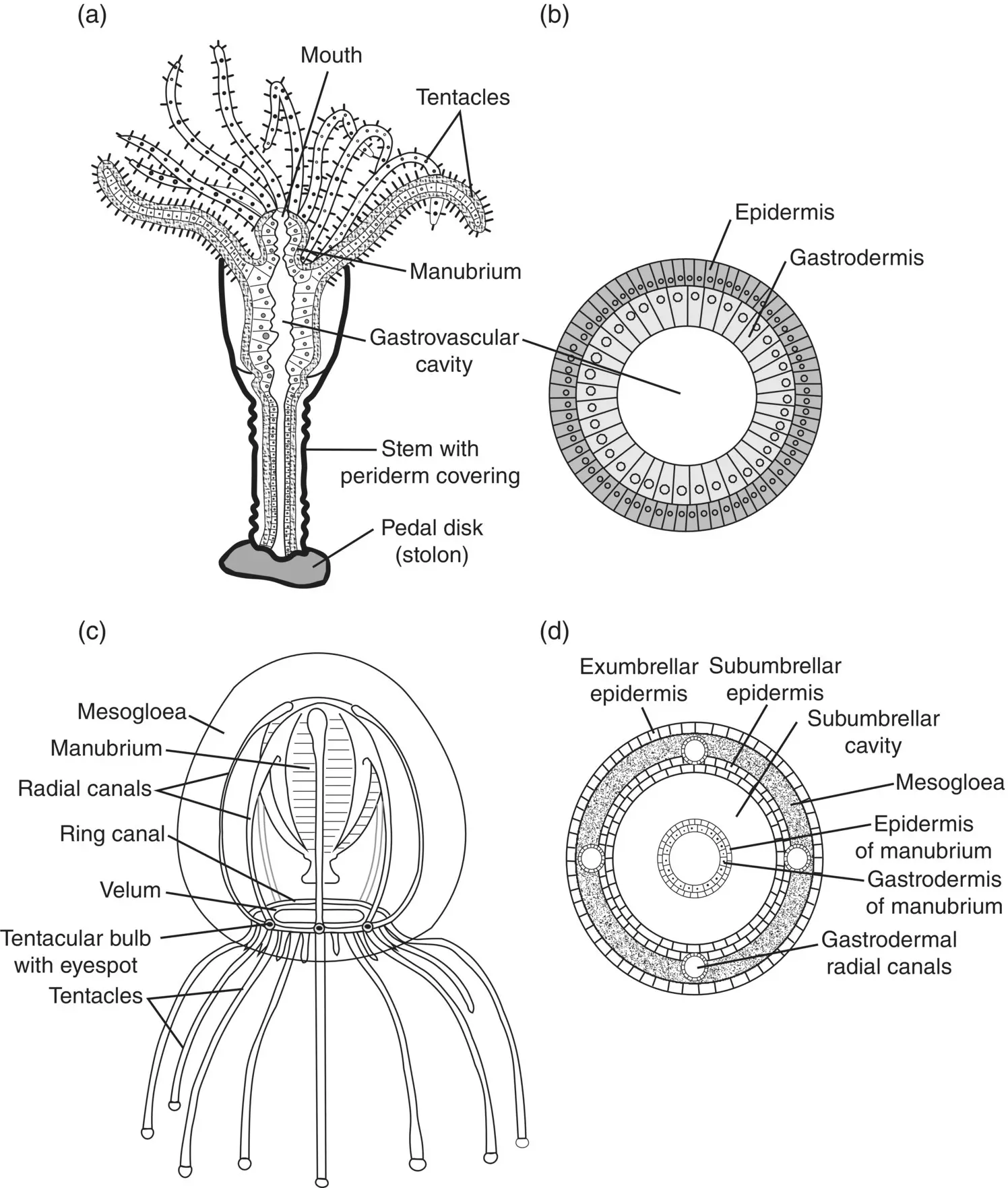
Figure 3.4 Cnidarian structure. (a) Diagram of a hydroid polyp; (b) cross section of a hydroid polyp; (c) diagram of a hydrozoan medusa; (d) cross section of a hydrozoan medusa.
Source: Adapted from Hyman (1940), figure 106 (p. 368)
.
The radial canals originate at the four corners of the stomach and extend along the subumbrellar surface to join the ring canal that runs along the umbrellar margin. The umbrellar margin contains the marginal tentacles that are primarily used for subduing prey. The stomach, radial canal, and ring canal system provide for the distribution of nutrients to the medusa as a whole.
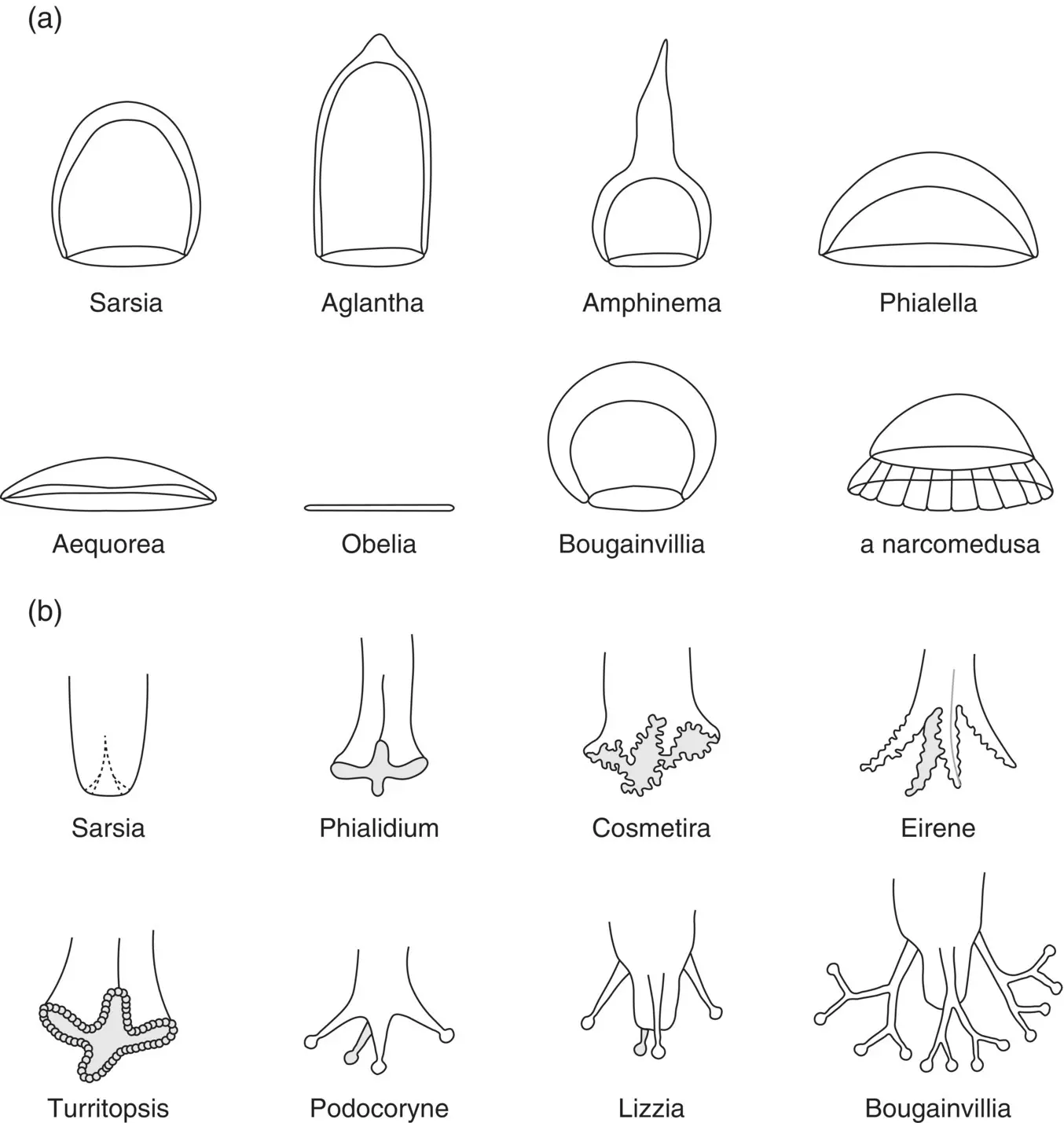
Figure 3.5 Medusae structure. (a) Diagrams of umbrella shapes of different medusae; (b) diagrams of mouths of different medusae.
Sources: (a) Russell (1954), figure 3 (p. 4); (b) Russell (1954), figure 55 (p. 5).
Morphological Detail and Life Histories
A fundamental characteristic in the classification of the hydromedusae is the presence or absence of a polyp stage. Anthomedusae, Leptomedusae, and Limnomedusae all have a fixed polyp stage, whereas the Trachymedusae and Narcomedusae exhibit direct development. Considerable diversity is evident in the polyp stages ( Figure 3.6).
Anthomedusaeare characterized as usually having a tall bell with gonads mainly on the stomach and manubrium or extending slightly along the radial canals. The hydranths (feeding polyps) of Anthomedusae are athecate, i.e. they lack a surrounding sheath ( Figures 3.6b and 3.7), thus giving the group its secondary name of Athecata or Anthoathecata. Common genera include: Coryne, Bouganvillia, Podocoryne, Cladonema, Amphinema, and Leuckartiara .
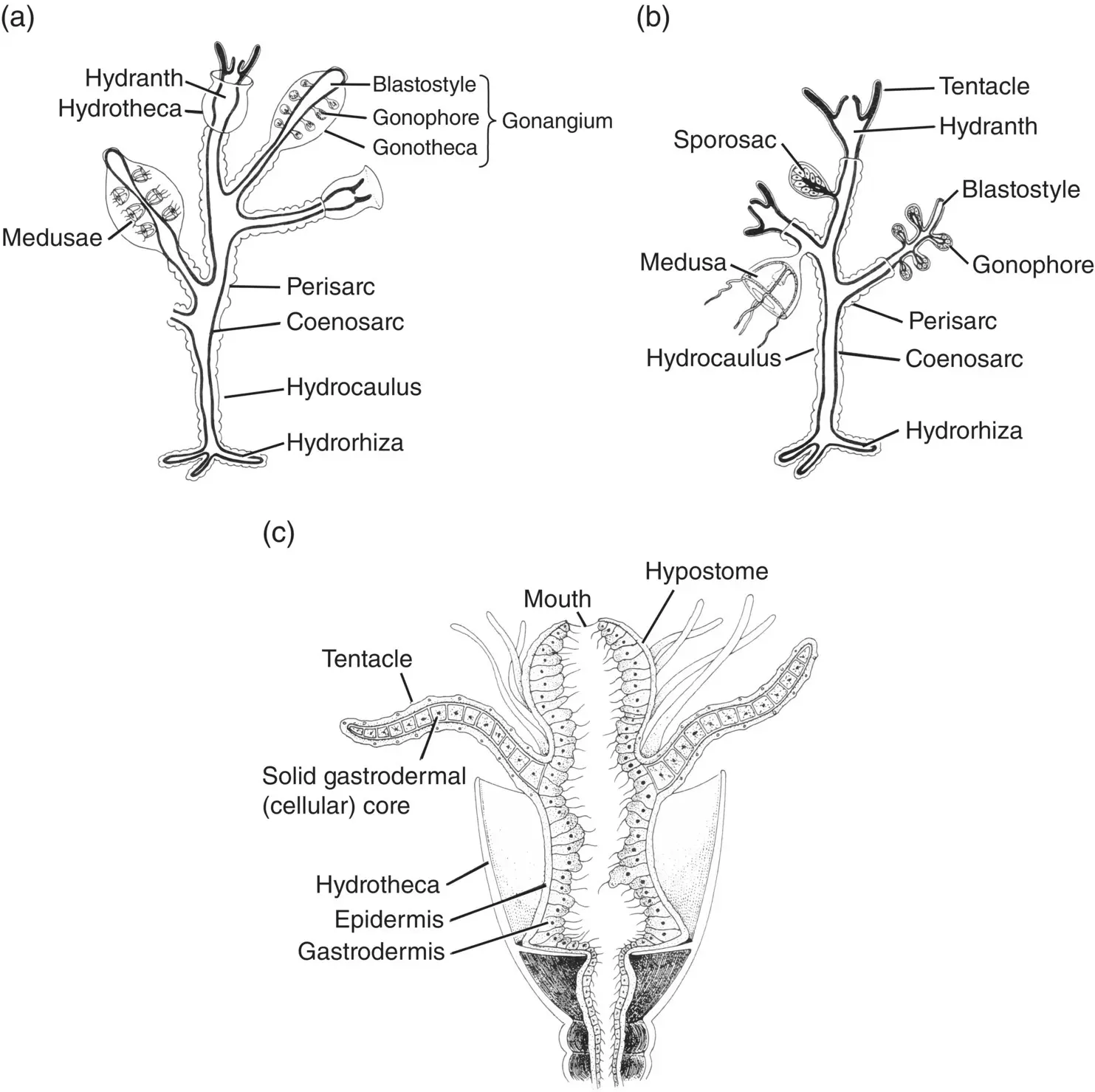
Figure 3.6 Anatomy of hydrozoan polyps. (a) Composite diagram of a thecate hydroid colony showing different reproductive structures. (b) composite diagram of reproductive structures in an athecate hydroid colony; (c) cross section of a thecate gastrozooid (hydranth).
Sources: (a) Adapted from Bayer and Owre (1968), figure 55 (p. 38); (b) Bayer and Owre (1968), figure 54 (p. 38); (c) Bayer and Owre (1968), figure 53 (p. 38).
Leptomedusaeare more dorsoventrally compressed with gonads only on radial canals. Common genera include Laodicea, Aequorea, Obelia, Eirene, Mitrocoma, Eutima, Phialidium . Polyps are thecate (have a surrounding sheath, Figure 3.6a and c). The life cycle is shown in Figure 3.8a.
Limnomedusaehave some of the characteristics of the Anthomedusae, Leptomedusae, and Trachymedusae. Gonads are either on the stomach wall with continuation along the radial canals or only on the radial canals. A sessile hydroid stage with or without tentacles is present but often reduced. The group was created by Kramp (1938), who named it the Limnomedusae because many of the species lived in fresh or brackish water (Russell 1954). Common genera include: Aglauropsis, Olindias, Cubaia, Vallentinia, Proboscidatyla, Craspedacusta . The life cycle is illustrated in Figure 3.8b.
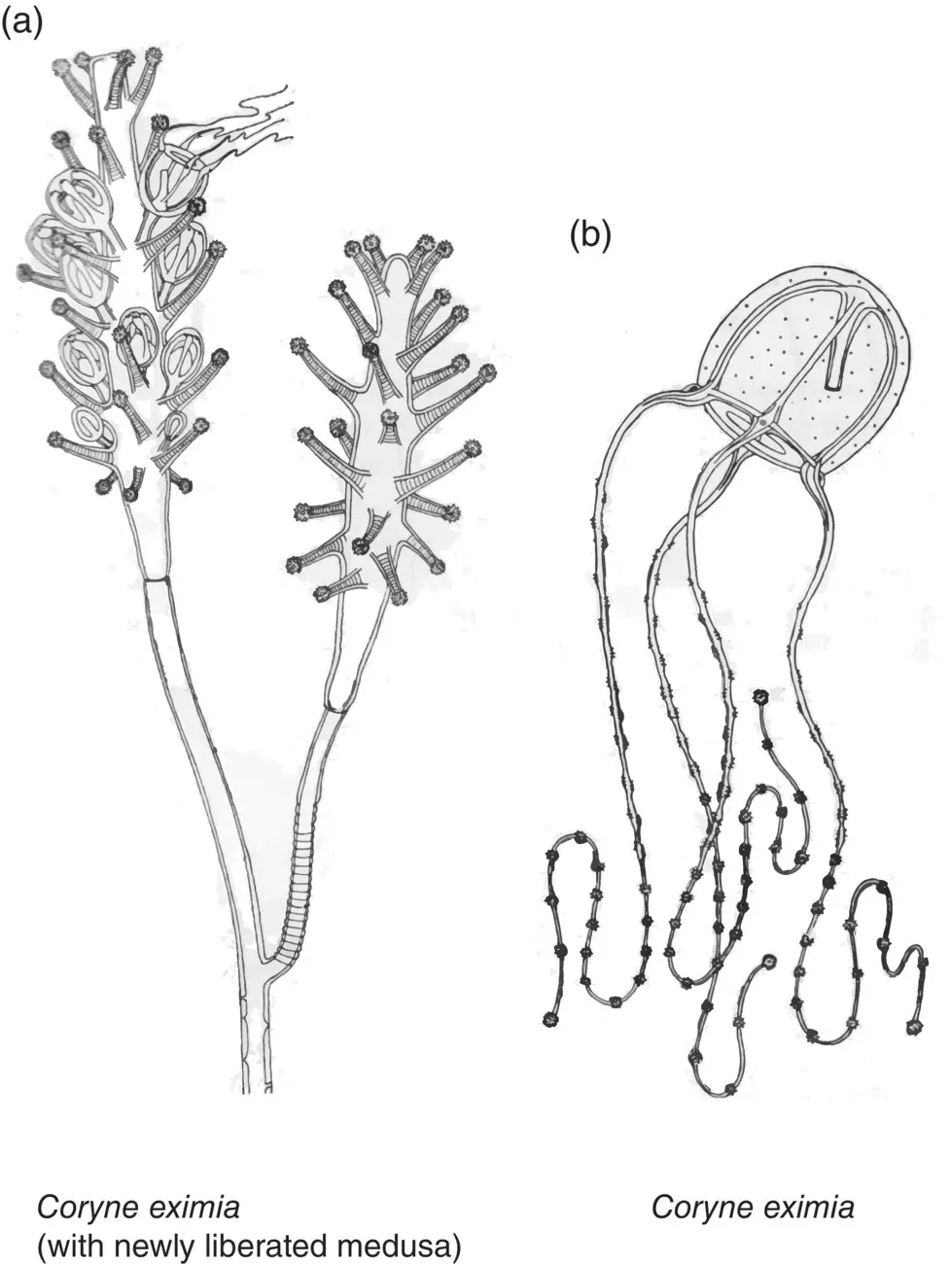
Figure 3.7 (a) The hydrozoan polyp Coryne eximia with newly liberated medusa Coryne eximia ; (b) a single hydrozoan medusa Coryne eximia produced by its polyp stage. Note the capitate (clublike) tentacles on the polyp.
Source: Redrawn from Mayer (1910), Vol. 1, (p. 56).
Trachymedusaehave a hemispherical or deep bell‐shaped umbrella with gonads usually confined to the radial canals. The life cycle lacks a polyp stage ( Figure 3.8c). Tentacles are solid, and the subumbrellar surface exhibits a heavy musculature suggesting a strong swimming ability ( Figure 3.9a). The velum is usually well developed. Common genera include: Liriope, Rhopalonema, Colobonema, Pantachogon, Crossota, Aglantha, Aglaura, and Halicreas . The trachymedusae are exclusively oceanic.
Narcomedusaeare the most bizarre of the hydromedusae ( Figure 3.9b). The sides of the umbrella are divided by peronial grooves so that the umbrellar margin may be lobed. They have a broad circular stomach that covers much of the subumbrellar surface, sometimes with peripheral pouches. Solid tentacles originate above the umbrellar margin. No radial canals are present. Narcomedusae are strictly oceanic. They have no true hydroid stage but may have parasitic larval development (Russell 1954). Common genera include Solmissus, Aegina, Aeginura, and Solmaris .
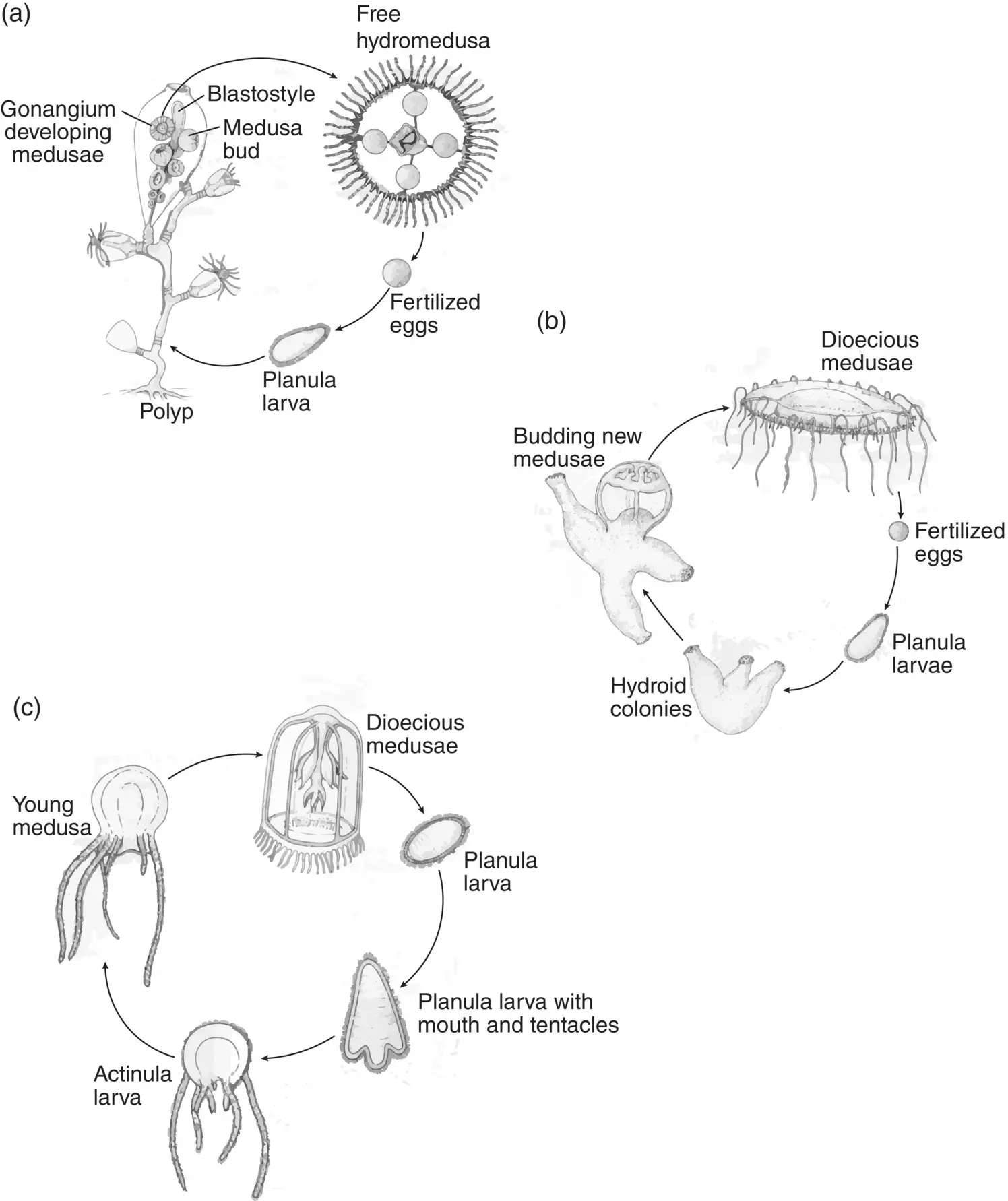
Figure 3.8 Life cycles of hydrozoans. (a) Obelia , a thecate hydroid with free medusae; (b) Limnocnida , a trachyline hydrozoan with a polypoid stage; (c) Aglaura , a trachyline hydrozoan without a polypoid stage.
Sources: (a) Adapted from Bayer and Owre (1968), figure 153 (p. 101); (b) Bayer and Owre (1968), figure 155 (p. 102); (c) Bayer and Owre (1968), figure 154 (p. 102).
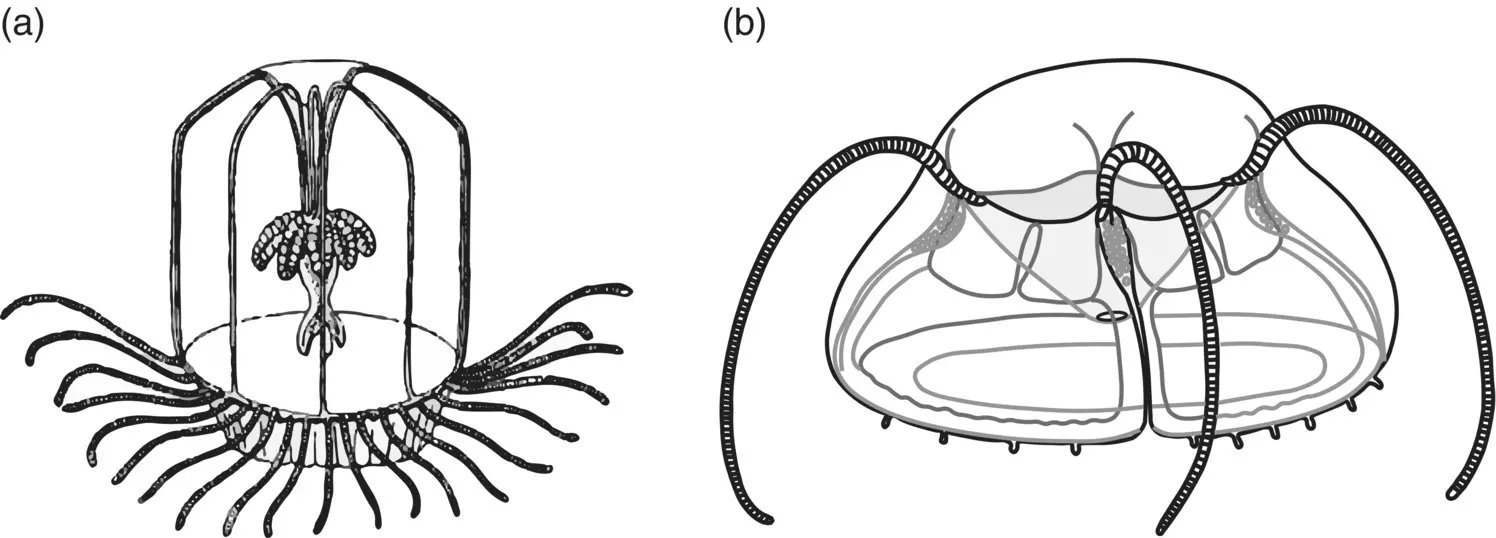
Figure 3.9 Hydrozoan medusae. (a) The trachymedusa Aglaura hemistoma . (b) The narcomedusa Aegina citrea .
Sources: (a) Kramp (1959); (b) Mayer (1904), plate IV.
The Scyphomedusae
Basic Characteristics
The Scyphozoa are exclusively marine. They occur from the surface to bathypelagic depths and from polar to tropical oceans. The medusoid stage dominates the life history. When present, the polypoid stage, termed the scyphistoma, is small and sessile. Scyphomedusae range in size from bell diameters of 2 cm to 2 m. About 223 species have been described.
All three orders of Scyphomedusae are pelagic: the Coronatae, Semaeostomae, and Rhizostomae. The coronate medusae are all found in deep water and, because of that, tend to have very wide‐ranging distributions. Semaeostome and rhizostome medusae are found primarily in coastal waters. Even so, some species, e.g. the semaeostome Pelagia noctiluca and the cannonball jelly Stomolophus meleagris , exhibit considerable latitudinal range (Mianzan and Cornelius 1999).
Scyphomedusae differ from Hydromedusae in that Scyphomedusae have no velum, the “skirt” that extends from the umbrellar margin into the subumbrellar space (see Figure 3.3). Additionally, they have gastric filaments in the digestive system, and the embryological origin of the gonads is endodermal (see Chapter 5for a description of embryological germ layers). Symmetry in the Scyphomedusae is markedly tetramerous in both the polyps and medusae. This characteristic is most obviously manifested by the presence of four oral arms in many species and in the organization of the gastric system ( Figure 3.10). The four oral arms lead to the lips of a central mouth that connects to the stomach via a manubrium or oral tube. Cnidoblasts on the oral arms aid in capturing prey and in defense. As in the Hydromedusae, nutrition is conveyed from the stomach to the periphery via radial gastrovascular canals. The position of the canals relative to the axis defined by the oral arms determines their name. Thus, the perradial canals lie in the same axis as the oral arms and the lips of the mouth and are considered the primary axes. In the middle of the quadrants defined by the perradial canals lie the interaradial canals. Finally, the adradial canals bisect the space between the perradial canals and the interradials. The body wall consists of an outer epidermis and inner gastrodermis separated by mesoglea. The mouth is the only opening to the digestive system; all food, waste, and gametes must move through the same opening.
Читать дальшеИнтервал:
Закладка:
Похожие книги на «Life in the Open Ocean»
Представляем Вашему вниманию похожие книги на «Life in the Open Ocean» списком для выбора. Мы отобрали схожую по названию и смыслу литературу в надежде предоставить читателям больше вариантов отыскать новые, интересные, ещё непрочитанные произведения.
Обсуждение, отзывы о книге «Life in the Open Ocean» и просто собственные мнения читателей. Оставьте ваши комментарии, напишите, что Вы думаете о произведении, его смысле или главных героях. Укажите что конкретно понравилось, а что нет, и почему Вы так считаете.


